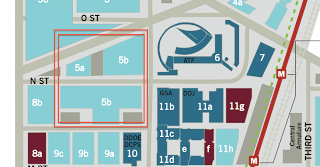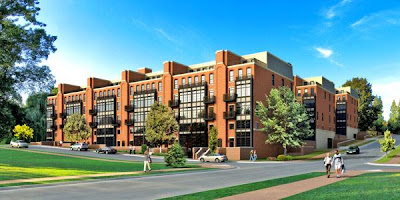In Memory of Paul
Hughes
1943-2012
1943-2012
Environmental
Activist and Visionary
Founder and President, DeConstruction Services, LLC
and ReBuild Warehouse
by Beth Herman
At 7 p.m. on the bone-chilling evening of December 23,
2010, when Washington had long since gone for the holidays, and though he had a
persistent cough, fever and raging bronchitis, Paul Hughes gave me an hour
of his time. It was a phone interview and try as I might to postpone it to
another day, when some semblance of his strained, raspy voice would have
returned, Hughes was intent upon keeping the appointment. Though I pictured the
then 67-year-old environmental activist huddled over eucalyptus-infused steam,
swaddled in a polar fleece wrap on the sofa of a dimly lit room, in reality I learned he
was sitting upright at his desk, multitasking, computer humming, lights blazing,
as though it was just another day (or night) at the office.
True to his deep sense of humanity and character, something
revealed to me not so much by his robust bio and hard-won list of achievements but
rather by the unrelenting credit and opportunity he gave to everyone else, Hughes
was a quiet revolutionary. Cuirassed in earth-friendly prose and practices, he
soldiered on, in fact early on, long before concepts like “renewable” and “sustainable”
became as commonplace and easy to swallow as butter and toast.
Though legions of green crusaders roamed the
planet, a fierce dedication to recycling, repurposing and renewing people’s
lives—maybe even more so than the old lumber he pulled out of deconstructed
homes through his Fairfax, Virginia-based DeConstruction Services, LLC—was what
distinguished Paul Hughes.
In addition to harvesting old materials and making them
available at supremely reduced rates to the public through his 501(c)(3)
organization ReBuild Warehouse, the former nonprofit grant and environmental
services consultant gave dozens of nonviolent ex-offenders a chance to turn
their lives around. With valuable training and
full-time employment offered through his businesses, Hughes invested in human dignity
as much as anything else.
“It’s going 180 degrees against the trend,” he’d said in
that 2010 interview: http://www.dcmud.blogspot.com/2011/01/recycling-lumber-and-lives.html
. “Most contractors are trying to get away from employing a lot of people…so
they can offload liability costs, worker’s comp and matching social security.
They contract everything out to subcontractors and let them worry about where
to get laborers—often just day laborers to whom fewer laws apply, and who have
little hope of pulling themselves up.”
His life
Born and raised in Toledo, Ohio, and marrying his
University of Toledo sweetheart, Linda, Paul Hughes “…had his fingers in so
many pies—he just had so many different interests,” according to his wife. Following
their 1967 marriage, Hughes was instrumental in setting up Hospice of Northern
Virginia in a former school building—the region’s first hospice. With an eye to
environmental issues, he also vehemently resisted the Lorton incinerator
project, though sadly lost the battle.
When ReBuild Warehouse, established in Springfield,
Virginia 2008, suddenly lost its lease three years later, in typical fashion
and wasting no time, Hughes diligently acquired a smaller space as an interim
measure to continue to serve and educate the community. Staff (largely
volunteer), hours and convenience were cut back, but he kept moving forward.
Hughes’ good friend Hank Blakely called him “a force of
nature.” A lay minister at the Unitarian Universalist Congregation of Fairfax
in which Hughes was also active, Blakely is also on the board of directors of
the Reston Citizen’s Association, vice president of Sustainability Reston and also
of parent company the Fairfax Coalition for Smarter Growth—an organization
started by the visionary Hughes.
In his spare time, Hughes spent weekends canvassing flea
markets and farmer’s markets, handing out brochures about the environment. “He
was so far ahead of everyone else in his environmental thinking—particularly in
the beginning— it could be frustrating when people couldn’t comprehend his
vision and sense of urgency,” Linda Hughes said.
According to Blakely, Hughes was the "Johnny Appleseed of
nonprofit organizations in Northern Virginia. He put his heart and his money
where his voice was on these issues. He absolutely backed the things that he
believed in,” he said about his friend, who was also Northern Virginia Green
Party chairperson.
Toward the end of our phone interview on that pre-holiday evening, I recall making a
note to myself to meet Paul Hughes, but like many of us I simply put it off,
content to keep myself updated through ReBuild Warehouse’s e-newsletters about
their many challenges and achievements. He died on September 15 from cardiac arrest following a
bicycle ride with his wife.
With all he had accomplished, Linda said there were many
more things he wanted to do. He could still see ahead. The economy was changing
and things were opening up again.
Said Blakely, “It never struck us that Paul would go
away. It just felt like he would always be here.”

















































